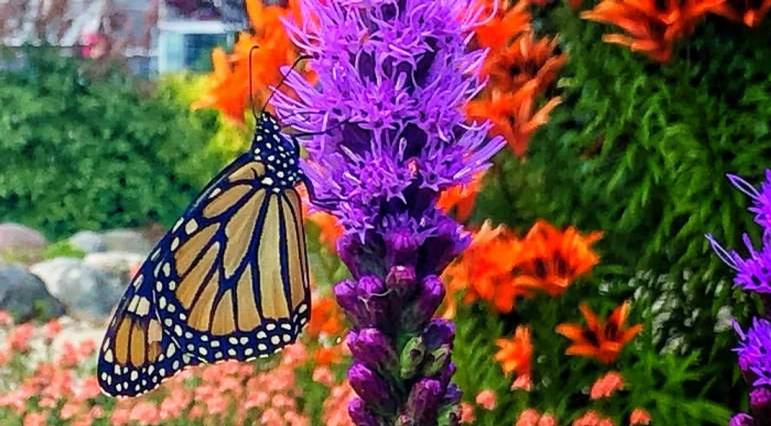Raising Monarchs

Butterflies have always fascinated me. There is such miracle and mystery in a creature transforming from a small egg, to a hungry caterpillar, to a chrysalis, and finally to take wing and float gracefully from flower to flower only to give birth to the process of metamorphosis all over again. One of the most recognizable butterflies with its bright orange wings and black veins is the monarch. People of all ages have been enchanted by this creature that makes a yearly trip of more than two thousand miles to overwinter in the oyamel fir forests of Mexico.
Last year our family began raising monarch butterflies in earnest and providing a safe place for them to grow. Despite a record number of mosquitoes in years past, my wife encouraged me not to spray any heavy insecticide which would also harm the butterflies. We also allowed several stands of the common milkweed to grow—even though it didn’t exactly “fit” the landscape. For the past two summers, my kids (mostly my 9-year old daughter) raised and released around 50 butterflies each year and they are already looking forward to next year.
Here are five lessons our family learned:
First, caring for nature is emotionally very rewarding. It just feels good. This is especially true in 2020 with the pandemic. Even though we were limited in where we could go or who we could hang out with, we were helping creatures around us live a happy life.
Second, caring for animals teaches responsibility. Each of us took turns watching out for the monarchs when it came to feeding, cleaning cages, and releasing butterflies as they came out. We reminded each other that these are living creatures that need constant care.
Third, caring for butterflies helped bring our family together. Most of the experiences were very enjoyable. We watched as the caterpillars shed their old skin as they entered their chrysalis then transitioned from green to black and then watched with bated breath as the chrysalis split open and the butterfly emerged to slowly pump up its wings. Things don’t always go well. Sometimes the caterpillars get sick and die. Sometimes they have to be quarantined in separate jars and cages. One evening I went to tuck my oldest in and she had tears in her eyes. In her hand was a butterfly that had hatched out that morning. Rather than smooth straight wings, its wings were curled and deformed. “It’ll never fly or be able to migrate,” my child lamented and her body shook with sobs. All I could do was hold her—there was nothing I could do to fix the problem. This experience led to some deep conversations that would not have been possible otherwise.
Fourth, monarchs prefer some milkweeds over others. Common milkweed (asclepias syriaca) is most desirable and probably the easiest to grow. They will also eat swamp milkweed (asclepias incarnate) and butterfly weed (asclepias tuberose). They don’t prefer the tropical milkweed (there is also evidence that this plant disrupts their internal migration compass)—though the flowers do make for a good nectar source and add beauty to the garden. We also found that the gomphocarpus physocarpus, nicknamed “hairy balls” is LOVED by monarchs.
Finally, we are not alone in this. Someone who inspires my family is a friend of Ebert’s who wishes to keep a low profile, but who raises hundreds of butterflies each year. I also have a friend that has raised almost 70 monarchs this year and whose daughters have named every one of them. Furthermore, we’re seeing more and more pictures show up on Facebook of people making their yards butterfly friendly. It’s awesome to be part of this!
I encourage everyone to participate. If you don’t have time to raise butterflies, at least make your yard into a butterfly sanctuary. There are many articles about which plants to use for food and nectar that are readily available online that you can reference if you need help or ideas. It is totally worth the effort!
Have a fabulous week!
Jake (jmertins@ebertsgreenhouse.com)